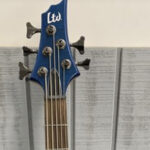Understanding the notes on your guitar fretboard is a foundational step in your musical journey. Whether you’re just starting out or looking to deepen your understanding of music theory, knowing where each note lies on your guitar neck opens up a world of possibilities. This guide provides a comprehensive Guitar Music Notes Chart and explores everything you need to master the fretboard.
Understanding Guitar Tuning: The Foundation
Before diving into the guitar music notes chart, it’s crucial to understand standard guitar tuning. The most common tuning for a 6-string guitar is Standard Tuning, where, from the thickest string to the thinnest, the strings are tuned to E, A, D, G, B, and E. This tuning serves as the basis for most guitar music and learning resources.
While alternative tunings like Drop D or DADGAD offer unique sonic landscapes, mastering the fretboard in standard tuning is essential. All the guitar music notes chart and diagrams in this guide are based on standard tuning.
Alt text: Standard guitar tuning EADGBE diagram showing open string notes on the fretboard.
String Numbering: Getting Oriented
To effectively use a guitar music notes chart, you need to know the standard string numbering. Guitar strings are numbered from the thinnest (highest pitch) to the thickest (lowest pitch):
- 1st string: Top E (thinnest string)
- 2nd string: B
- 3rd string: G
- 4th string: D
- 5th string: A
- 6th string: Bottom E (thickest string)
Guitar Notes on the Piano: Visualizing Pitch
It’s helpful to visualize guitar notes in relation to a piano keyboard, especially since standard music notation is often taught with the piano in mind. Guitar music is notated an octave higher than it actually sounds. This means when you read a middle C on guitar sheet music, it will sound an octave lower than middle C on a piano. Understanding this octave difference can bridge the gap between guitar and broader musical concepts.
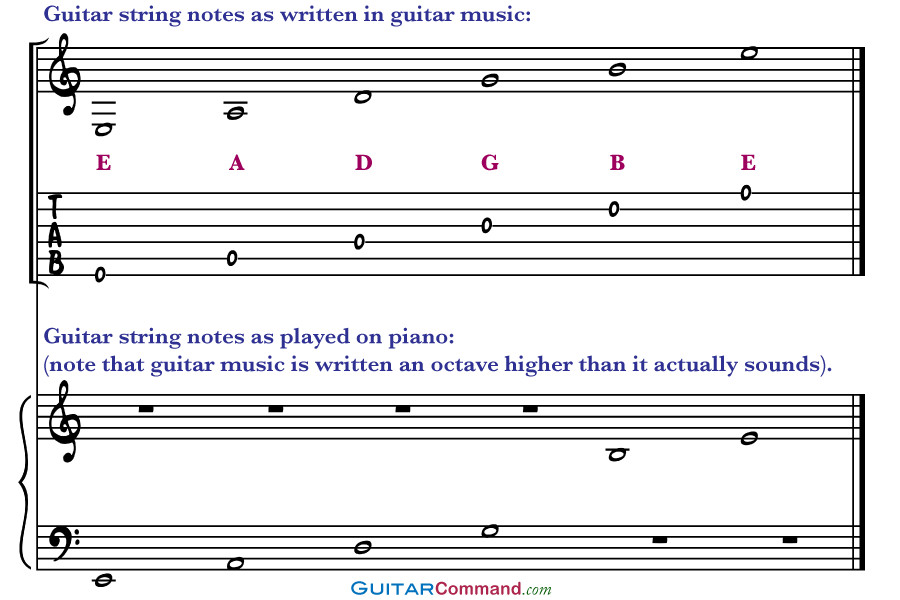 Guitar string notes on piano
Guitar string notes on piano
The Comprehensive Guitar Music Notes Chart
The guitar music notes chart below is your key to unlocking the fretboard. It displays all the natural notes on the guitar neck up to the 12th fret. Notice that after the 12th fret, the notes repeat, just an octave higher. For example, the notes at the 13th fret are the same as the 1st fret, but one octave higher in pitch.
Use this chart to locate any natural note on your guitar. Simply find the note name you’re looking for and see its position on the fretboard.
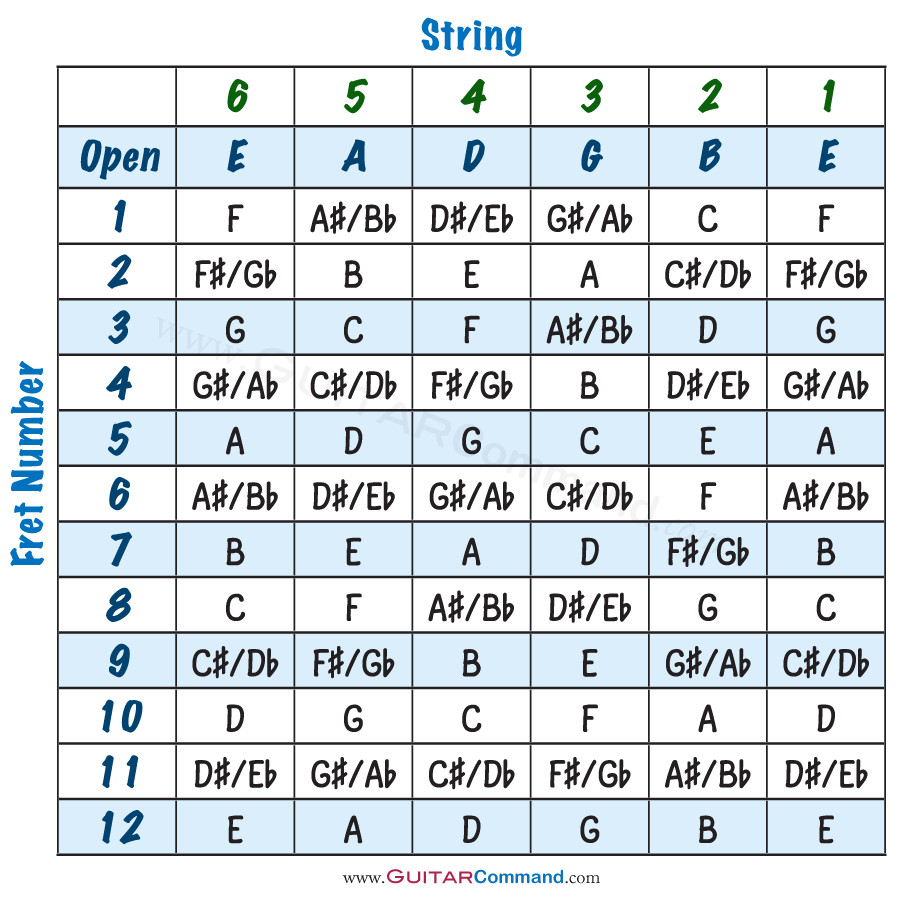 Guitar Strings Notes Chart
Guitar Strings Notes Chart
Guitar String Notes Breakdown: String by String
Let’s break down the guitar music notes chart string by string for a more focused approach. Each diagram below shows the notes on an individual guitar string, presented in both standard music notation and guitar tablature (tab). Tablature is a guitar-specific notation system that visually represents the fret and string to play.
1st String (High E) Notes
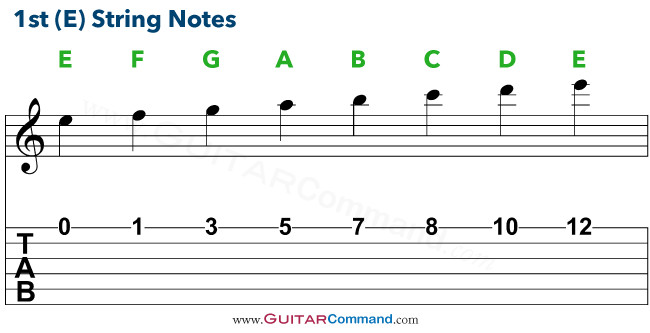 Guitar Top E String Notes
Guitar Top E String Notes
2nd String (B) Notes
The 2nd string, tuned to B, follows the same pattern of notes as the 1st string, starting on B. As you move up the frets, the notes ascend chromatically: C, C#, D, D#, E, F, F#, G, G#, A, A#, B, and then repeat at the octave.
3rd String (G) Notes
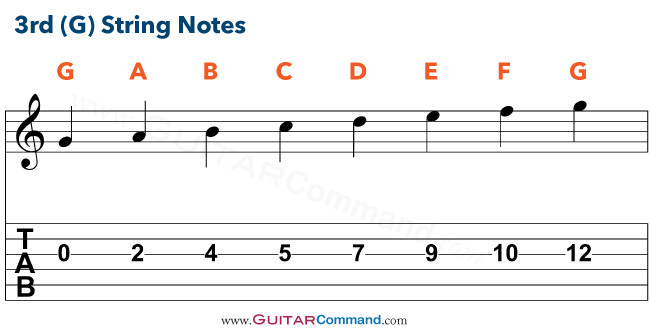 Guitar G String Notes
Guitar G String Notes
4th String (D) Notes
 Guitar D String Notes
Guitar D String Notes
5th String (A) Notes
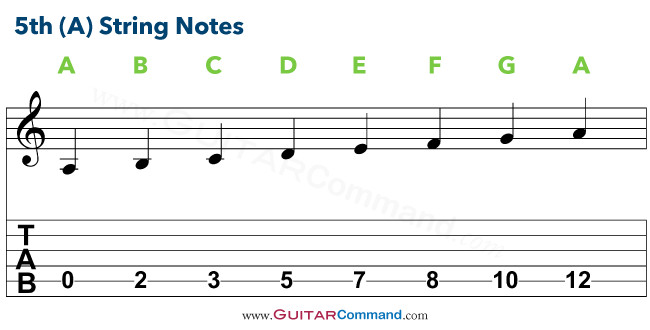 Guitar A String Notes Tab
Guitar A String Notes Tab
6th String (Low E) Notes
The 6th string, tuned to low E, is the lowest pitched string. Like the other strings, the notes ascend chromatically as you move up the fretboard: F, F#, G, G#, A, A#, B, C, C#, D, D#, E, and then repeat at the octave.
Understanding Sharps and Flats
In music, we don’t just have natural notes (A, B, C, D, E, F, G). We also have sharps (#) and flats (b), which are notes that are a semitone (half step) higher or lower than natural notes, respectively.
A sharp symbol (#) raises the pitch of a note by a semitone. On the guitar, this means moving one fret higher. A flat symbol (b) lowers the pitch by a semitone, meaning moving one fret lower.
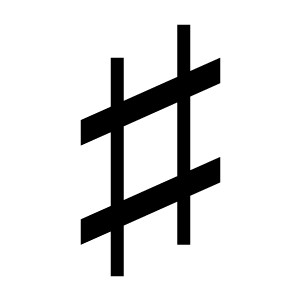 Sharp Symbol Music
Sharp Symbol Music
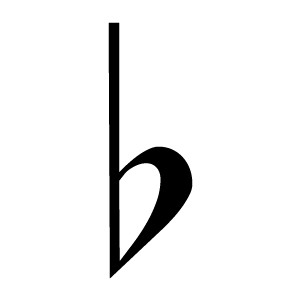 Flat Symbol Music
Flat Symbol Music
It’s important to note that some notes can be referred to as either a sharp or a flat – these are called enharmonic equivalents. For example, A# and Bb are the same pitch, just named differently depending on the musical context.
Effective Ways to Learn Guitar Notes
The best way to internalize the guitar music notes chart is through active playing and repetition. Practicing scales is an excellent method. As you play scales in different positions on the neck, consciously say the name of each note aloud. Consistent, short practice sessions are more effective than infrequent long ones. Even dedicating just a few minutes each day to note recognition practice will significantly improve your fretboard knowledge over time.
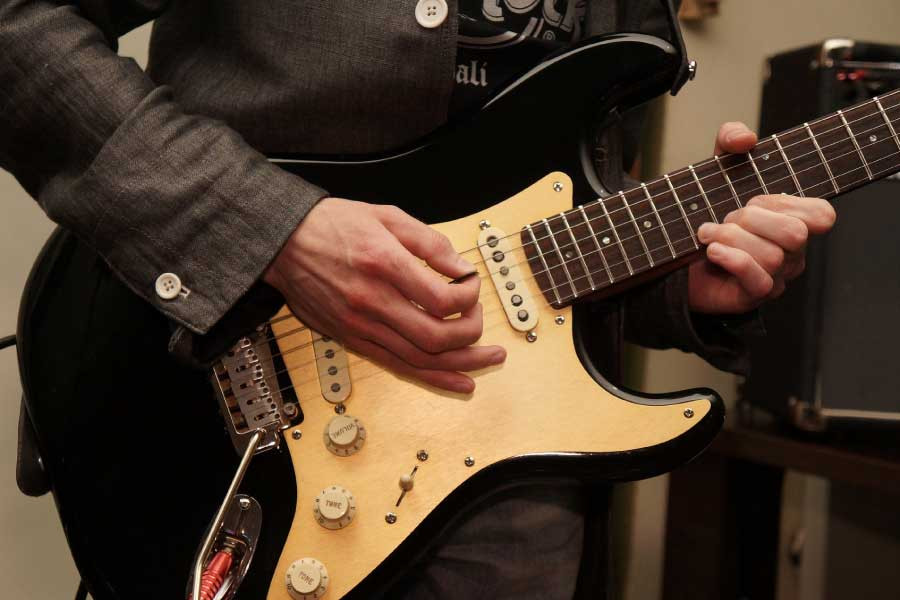 Learning guitar notes
Learning guitar notes
Why Learning Guitar Fretboard Notes Matters
Some guitarists manage to play without a deep understanding of fretboard notes, relying on patterns and shapes. However, knowing the notes you’re playing offers significant advantages. It enhances your musical understanding, allowing you to see how chords and scales are constructed. This knowledge is invaluable for improvisation, songwriting, and communicating with other musicians. It deepens your overall connection to music and your instrument.
Conclusion
Mastering the guitar fretboard notes is an investment that pays off in countless ways. Use this guitar music notes chart as your starting point, practice regularly, and you’ll unlock a new level of musical understanding and guitar playing proficiency. Embrace the journey of learning the fretboard, and enjoy the enhanced musicality it brings to your playing.

